Want to know how a 360 degree surround view camera system works and plan to install an aftermarket 360 car camera system for your car? Then look no further.
Automotive cameras market is forecast to reach USD 15.1 billion by 2025 (marketsandmarkets), enrolling CAGR of 10.8percent between 2019 and 2025. With growing awareness around multi camera technology, automotive companies have begun introducing surround view methods in their mid-priced and financial car sections.
A correctly implemented surround view camera system enhances the driver’s safety by offering a car overhead view. Automotive surround view camera provides greater visibility and orientation 360-degrees around the automobile and aids in mitigating accidents, and automobile accidents during lane shift, parking, and steering.
Surround-view camera techniques consist of four cameras or more with every having >180-degrees flat field of view. Automotive cameras from the system are set up in just two wing mirrors or side doors, front and in the back side of the automobile and gives 2D and 3D perspective of the car’s environment.
The surround-view camera system performs two principal purposes, first is camera calibration and then is merging of multiple video streams into a single.
The four 180-degrees cameras create images from all measurements of the automobile and these pictures are concurrently sent to ECU in which they’re processed for correction, together and stitched together to generate real-time perspective of the environment of the vehicle.
There can be two different kinds of surround systems:
-
2D Surround View Camera Systems: Two dimensional surround viewpoint is a conventional perspective, which projects a bird’s eye perspective of their vehicle’s environment on the screen. Raw pictures or video feeds from the cameras have been stitched to shape the bird’s eye perspective on a level surface.
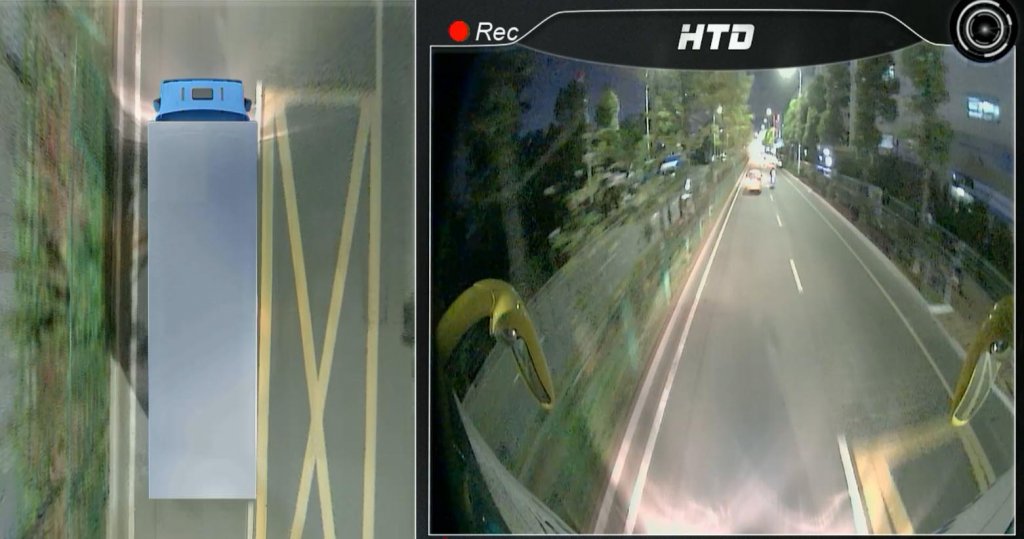
-
3D Surround View Camera Systems: In 3D surround perspective systems, automobile and its environment are revealed in 3D representation, which can be in spherical shape. As it’s a 3D representation of the environment in 360-degrees, the images could be pulled from any angle around the vehicle.
Can i install a surround view camera system for my car?
There’re aftermarket 360 car camera kits exist that let you install a surround view camera in your vehicle. Surround view camera system installation commonly incorporates a few cameras and a regulator that joins them all to your vehicle’s infotainment screen. In spite of the fact that these systems may give a preferable view over a backup camera (or no camera by any means), they can’t match systems installed in the factory.
Auto engineers put forth an admirable attempt to impeccably situate the cameras, cover them inside the vehicle’s design, and shield them from the climate. More exertion is made to consolidate their perspectives into a reasonable, consistent picture. A 360-degree camera unit you install yourself probably won’t coordinate the clearness or effortlessness of a stock framework, however it could regardless make backup or parking simpler.
Is a surround view camera system worth it?
Although a few drivers are greater at backing up or parking a car than others, we would all feel pain when wheels are curbed and bumpers are scuffed. In the event that you need assistance keeping away from such car anguish, a 360-degree camera system is justified. Despite the fact that 360-degree cameras are discretionary additional items on most vehicles, the accommodation and genuine feelings of serenity they give can appear to be inestimable.
In any case, a standard rearvie camera, parking sensors, or basically your ability at sliding into parking spaces can be comparable to a 360-degree camera, particularly if the system doesn’t quick and easy to turn on, or on the off chance that it shows on a screen that is grainy or excessively little. Not certain if a 360-degree camera system is justified, despite all the trouble? Give one a shot on a test drive and see with your own eyes.
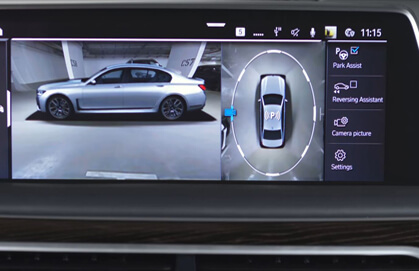
BMW Surround View Camera(Picture Source: bmwblog.com)
Camera calibration process(Aftermarket Kits)
Camera calibration could be thought of one of the most difficult jobs while deploying a surround view system in a car or truck. It’s the procedure of calibrating the environment view cameras with all the exterior atmosphere. Camera calibration ensures proper performance of the surround view system as improper camera calibration might cause non-aligned picture stitching, ghosting and faulty color correction. Majorly OEMs encourage the installation of cameras (from automotive camera providers) to the automobile and guarantees appropriate camera calibration to the computer system.
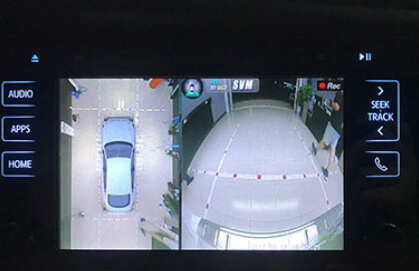
Shown is Kocchi’s 360° camera calibration with tapes
-
Intrinsic Parameters: Intrinsic parameters in camera calibration originates from both sides of automotive cameras providers. Since surround perspective cameras have a bigger field of view, it’s very important to quantify parameters as optical facilities of the camera, focal length, camera projections, detector resolution, and lens distortion, as averting such parameters may lead to distorted image creation.
-
Extrinsic Parameters: Extrinsic parameters in camera calibration is dependent upon the relative positions and orientation of the cameras with regard to a frequent point in the car’s body. Extrinsic parameters in camera calibration is very important to specify the picture overlap regions. Not Placing, it can result in improper overlapping of this surround view picture. Extrinsic parameters of the camera calibration may also be impacted by the suspension of this automobile as faulty suspension can result in displacement into the camera location.
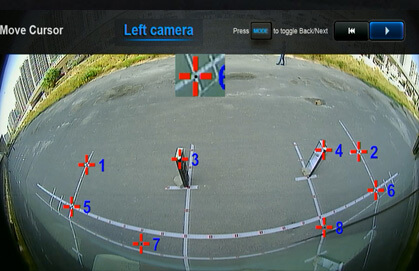
Aiming process
Merging and rendering
The following step in the process involves combining the recorded images to a unified surround view picture that could then be shown. It entails re-projecting the camera-sourced pictures, initially taken from various perspectives, and more commonly merging the different video streams. Additionally the live pictures themselves, it uses the different digital cameras’ perspective parameters, in addition to the qualities of the surface the rendered image will be re-projected onto.
One common technique is to simply project the camera pictures on a plane which reflects the floor. But this approach leads to a variety of distortions; for instance, objects climbing over the ground plane, like pedestrians, trees and street lights, will probably be stretched out (See below picture). The consequent unnatural images which makes it more difficult for the driver to correctly gauge distances to different objects. An ordinary improved technique would be to leave the pictures on a bowl-shaped surface rather. This strategy causes a less-distorted final picture, but it nevertheless includes a few artifacts. Ideally, as a result, the algorithm could re-project the cameras’ images on the true 3D structure of the car’s surroundings.

How does 360 car camera work?
As you back down your driveway you can check whether your vehicle is focused. In the event that you have your driveway dominated, you may not be acquainted with a friend’s driveway, particularly one that has a bend, or runs downhill to the road and can’t be seen through your rearview mirror. On the off chance that you back or ease into an equal or opposite parking spot and you don’t have a self-parking system, you can completely focus your vehicle in the spot, maybe the lone vehicle at the shopping center so left, and stay within the legal 6-12 inches of the curb on-street.
3D 360° Surround View System works by taking video input from 4 or more HD cameras around the car and then combining them to simulate a camera looking down on the car to help prevent collisions with Vulnerable Road Users (VRU’s), objects and vehicles around the bus. The system has been developed to reduce collisions and increase safety. Merged fours cameras images shown together or separately provide views to reduce blind spots and displaying VRU’s and other obstacles in blind zones.
To find the right 360 car camera system for you, follow the info described above. It will help you make sense of all the options available, and find one that has the features and support you need.

Article by: Eason
Eason He
Kocchi’s product manager Eason brings his technical expertise to help explain vehicle safety products in an easy to understand fashion. Eason loves sharing his knowledge of the vehicle camera system and technology insights. He is the part of Kocchi’s team that knows ‘all the things’. He’s good at sharing his technical knowledge so you can benefit. BTW, he is an avid Lego fan!
Kocchi’s Vehicles Camera Systems & Fleet Management
Manufacturing world-class commercial vehicle camera systems, dealers and customers throughout the world choose Kocchi’s products to protect people in transit and transportation. Our award-winning solutions are trusted by more than 1000+ companies and organizations across the world.

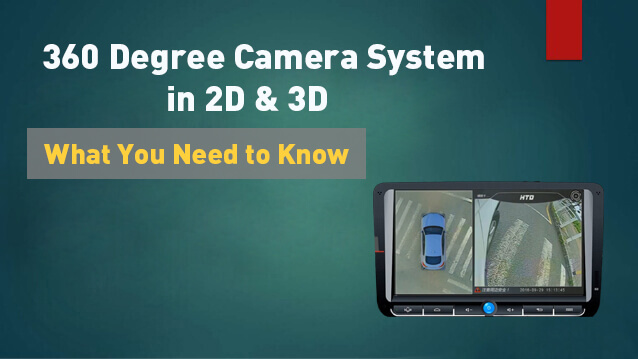
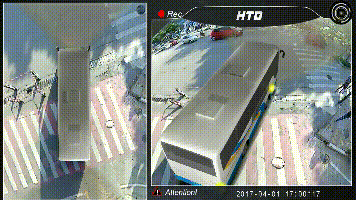


Leave A Comment